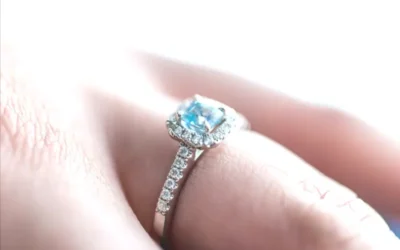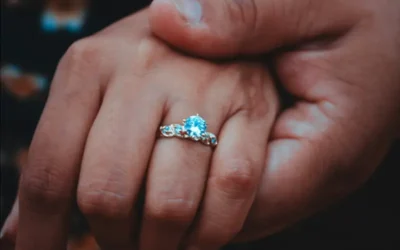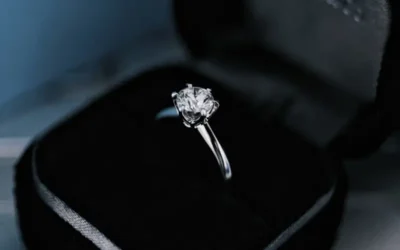Have you ever been mesmerized by the sparkle of a diamond and found yourself wondering, “What exactly is a carat?” Or maybe you’re shopping for an engagement ring and suddenly feel overwhelmed by all the technical terms. Don’t worry, you’re not alone! Decoding the mystery behind the diamond carat will unlock the true value of your gemstone and empower you to make a confident decision.
Diamond carat is often misunderstood, but it’s a crucial aspect of understanding a diamond’s value and appearance. It’s not just about size – it’s about weight. And while size is a factor, cut and other qualities play a huge role in how that weight translates into dazzling brilliance.
Think of it this way: understanding the diamond carat is like understanding the horsepower of a car. It’s important, but it’s not the only thing that matters. You also need to consider the engine, the design, and how well it handles!
not the only thing that matters. You also need to consider the engine, the design, and how well it handles!
While we will dive deep into the diamond carat, it’s important to acknowledge the other “4Cs” – cut, clarity, and color. They all work together to create the perfect diamond, but today, we’re focusing on the weight factor.
This guide will provide a clear, concise explanation of how diamond carat weight is measured, its relationship to diamond size, and how it influences diamond pricing and value. Get ready to become a diamond carat pro!
II. What Exactly is Diamond Carat? Unveiling the Weighty Truth
So, what is a diamond carat, really? Let’s break it down.
A. Defining the Carat: More Than Just Size
In simple terms, a diamond carat is a unit of weight used to measure gemstones, primarily diamonds. One diamond carat equals 200 milligrams, which is equivalent to 0.2 grams. That might sound tiny, but in the world of diamonds, those milligrams make a BIG difference!
B. A Little History: From Carob Seeds to Modern Measurement
Here’s a fun fact: the term “diamond carat” actually comes from the carob seed! In ancient times, carob seeds were used to balance scales because they were believed to have a consistent weight. While we’ve moved on to more precise methods, the name stuck!
C. Weight, Not Size…Mostly
It’s crucial to remember that diamond carat is a unit of weight, not size. Although larger diamond carat weights tend to mean larger diamonds, it’s not a direct correlation. We’ll explore the relationship between diamond carat and size in more detail later.
D. Points Matter: Breaking Down the Carat
To get even more precise, a diamond carat is divided into 100 “points.” Think of it like dividing a dollar into 100 cents. So, a diamond weighing 0.50 diamond carat is also called a 50-point diamond. This “point” system is really important when it comes to pricing, as even tiny differences in weight can impact the price significantly.
III. Measuring Diamond Carat Weight: Precision is Paramount
Okay, so now we know what a diamond carat is. But how do jewelers actually measure it? The answer is: very, very carefully!
A. The Gemological Scale: A Tool for the Pros
You won’t find jewelers using your average kitchen scale to weigh diamonds! They use highly specialized, incredibly accurate scales called gemological scales. These scales are calibrated and tested regularly to ensure the utmost precision. We’re talking about scales that can measure weight down to the nearest hundredth of a diamond carat!
B. The Measurement Process: How Jewelers Get it Right
Jewelers are trained to use these scales with meticulous care. They take multiple readings to ensure accuracy and document the weight precisely. Remember, even a slight difference can affect the value of the diamond.
C. Why DIY Measurements are a No-Go
Tempted to weigh your diamond at home? Resist the urge! Kitchen scales and other household scales simply aren’t accurate enough to determine the diamond carat weight with any reliability. You’re much better off relying on a professional appraiser or gemologist.
D. Trust the Certificate: The Gold Standard of Accuracy
This is why buying a certified diamond from a reputable source is so important. Reputable gemological labs like GIA (Gemological Institute of America) and AGS (American Gem Society) meticulously weigh and grade diamonds. Their certificates provide an objective assessment of the diamond carat weight, giving you peace of mind and assurance of accuracy. When in doubt, trust the certificate!
IV. Diamond Carat vs. Size: Separating Fact from Fiction
Alright, let’s tackle a big misconception: diamond carat equals size. While they’re related, it’s not as simple as saying a 2 diamond carat diamond is always “bigger” than a 1 diamond carat diamond.
A. Debunking the Myth: It’s About Weight, Remember?
Let’s reiterate: diamond carat refers to weight, not the physical dimensions of the diamond. So, while a higher diamond carat typically means a larger diamond, other factors play a significant role in how it appears.
B. Cut is King: The Impact on Apparent Size
The cut of a diamond is arguably the most important factor in determining its brilliance and apparent size. A well-cut diamond will reflect light beautifully, maximizing its sparkle and making it appear larger than it actually is.
1. Shallow Cut: Wide But Dull
A shallow cut diamond will make the diamond appear wider, but it will lack the brilliance of ideal cuts.
2. Deep Cut: Smaller But Brillant
A deep cut diamond will make the diamond appear smaller, but it will reflect light, thus, it will have more brilliance than ideal cuts.
On the other hand, a poorly cut diamond (e.g., one that’s too deep or too shallow) can appear dull and smaller, even if it has a higher diamond carat weight. Imagine a beautifully sculpted statue versus a lump of clay of the same weight – the sculpted statue will appear more impressive!
C. Shape Matters Too: The Illusion of Size
The shape of the diamond also affects how large it appears. Certain shapes, like oval, marquise, and pear, tend to look larger than round diamonds of the same diamond carat weight. This is because their elongated shapes create the illusion of greater size.
D. Visualizing the Difference: Diamond Carat and Millimeters
To give you a better idea of the relationship between diamond carat and size, here’s a general guideline for round brilliant cut diamonds:
- 0.50 Diamond Carat: Approximately 5.1 mm in diameter
- 0.75 Diamond Carat: Approximately 5.8 mm in diameter
- 1.00 Diamond Carat: Approximately 6.5 mm in diameter
- 1.50 Diamond Carat: Approximately 7.4 mm in diameter
- 2.00 Diamond Carat: Approximately 8.2 mm in diameter
Keep in mind that these are just approximate sizes. The actual diameter can vary slightly depending on the cut quality of the diamond.
V. How Diamond Carat Affects Diamond Price: Buckle Up for the Exponential Curve!
Now for the part everyone wants to know: how does diamond carat influence the price of a diamond? The answer is: dramatically!
A. The Non-Linear Relationship: More Diamond Carat, More Money
As diamond carat weight increases, the price per diamond carat also increases, and it’s not a simple, straight-line increase. It’s more like an exponential curve, meaning the price jumps significantly as you move up in diamond carat weight.
Think of it like buying land. A small plot might cost X amount of dollars. But a much larger plot, isn’t just a proportional amount. The price skyrockets!
B. “Magic Sizes”: The Price Jump Phenomenon
There are certain “magic sizes” in the diamond carat world, where prices tend to jump noticeably. These are typically at the whole-diamond carat and half-diamond carat marks, such as 0.50 diamond carat, 1.00 diamond carat, 1.50 diamond carat, and 2.00 diamond carat. This is because these sizes are in high demand, and there’s a perceived premium associated with reaching these milestones.
C. The Other 4Cs Still Count: A Holistic View
While diamond carat is a major factor, it’s crucial to remember that the other 4Cs (cut, clarity, and color) also play a significant role in determining the overall price. A flawless, colorless diamond with an excellent cut will command a much higher price than a diamond with lower grades in these categories, even if they have the same diamond carat weight.
D. Price Examples (for Reference Only!)
To illustrate the impact of diamond carat on price, let’s look at some hypothetical examples. Keep in mind that prices can vary widely depending on the jeweler, the specific characteristics of the diamond, and market conditions:
- Round Brilliant Cut, Excellent Cut, VS2 Clarity, G Color:
- 0.50 diamond carat: 1,500−2,500
- 1.00 diamond carat: 5,000−8,000
- 1.50 diamond carat: 10,000−15,000
- 2.00 diamond carat: 20,000−30,000+
Disclaimer: These prices are purely illustrative and should not be considered definitive. Always consult with a reputable jeweler for accurate pricing.
VI. Practical Tips for Choosing the Right Diamond Carat Weight: Finding Your Sweet Spot
Okay, so you’re armed with all this diamond carat knowledge. How do you actually choose the right diamond carat weight for your needs? Here are some practical tips:
A. Budget, Budget, Budget: Be Realistic About Your Spending
First and foremost, set a realistic budget. Diamond carat weight significantly impacts price, so knowing your spending limit will help you narrow down your options.
B. Consider the Wearer: Finger Size and Personal Style Matter
Consider the size of the wearer’s finger. A large diamond might look overwhelming on a petite finger, while a smaller diamond might get lost on a larger hand. Also think about their personal style – do they prefer understated elegance or bold statements?
C. Prioritize Cut: Sparkle is Your Friend!
Don’t sacrifice cut quality just to get a larger diamond carat weight. A well-cut diamond will sparkle more and appear larger than a poorly cut diamond of the same weight. Cut is king!
D. Evaluate All 4Cs: Finding the Right Balance is Key
Remember to evaluate all four Cs (cut, clarity, color, and [diamond carat]) together. Aim for a balance that fits your budget and preferences. Don’t get so fixated on diamond carat that you compromise on other important qualities.
E. The Setting Matters: How the Setting Can Enhance or Downplay
The setting can also influence the perceived size of the diamond. Halo settings, for example, can make a smaller diamond appear larger by surrounding it with smaller diamonds. Bezel settings can offer a modern and secure look.
F. Shop Around: Comparison is Crucial for the Best Deal
Compare prices from different jewelers and online retailers. Don’t be afraid to negotiate! Get quotes from multiple sources before making a final decision.
G. Consider Lab-Grown Diamonds: An Ethical & Budget-Friendly Alternative
If you’re looking to maximize diamond carat weight without breaking the bank, consider lab-grown diamonds. These diamonds are chemically and physically identical to mined diamonds but are typically less expensive.
VII. Diamond Carat FAQs: Your Burning Questions Answered!
Let’s tackle some common questions about diamond carat:
A. What’s the Average Diamond Carat Weight for an Engagement Ring?
The average diamond carat weight for an engagement ring in the US is around 1 diamond carat. However, this can vary depending on location, budget, and personal preferences.
B. Is a 1 Diamond Carat Diamond Considered Big? Depends!
Whether a 1 diamond carat diamond is considered “big” is subjective. It depends on personal preferences, finger size, and cultural norms. For some, it’s the perfect size; for others, it’s just the beginning!
C. How Can I Make a Smaller Diamond Look Bigger? Secret Tips
There are several ways to make a smaller diamond appear larger:
- Choose a halo setting.
- Opt for an elongated shape like oval or marquise.
- Ensure the diamond has an excellent cut.
- Choose a delicate band to emphasize the center stone.
D. Diamond Upgrade: Is It Possible to Upgrade the Carat Later?
Yes, you can usually upgrade your diamond’s diamond carat weight later, although it can be an expensive proposition. Many jewelers offer trade-in programs where you can apply the value of your existing diamond towards a larger one.
E. Total Carat vs Single Carat
This is important! Single stone diamond carat weight refers to the weight of a single diamond. Total diamond carat weight (ct. tw.) refers to the combined weight of all the diamonds in a piece of jewelry. For example, a ring with multiple small diamonds might have a total diamond carat weight of 1.00 diamond carat, but each individual diamond would weigh less.
VIII. Conclusion: Making an Informed and Confident Decision
Congratulations! You’ve reached the end of this comprehensive guide on diamond carat. You’re now equipped with the knowledge to understand what diamond carat is, how it’s measured, its relationship to size, and its impact on price.
Remember, understanding the diamond carat is just one piece of the puzzle. Don’t forget to consider all four Cs and to buy from a reputable jeweler who can guide you through the process.
Ultimately, the perfect diamond is the one that speaks to you and fits your budget and preferences. Trust your instincts, do your research, and enjoy the journey of finding your perfect sparkle!
Ready to find your perfect diamond? Browse our collection now and let our expert team help you find the diamond of your dreams! We’re here to answer your questions and guide you every step of the way. Happy diamond hunting!






